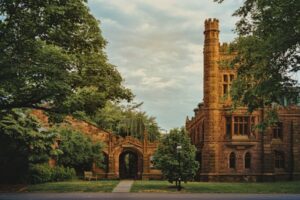Introduction
When you think of the pinnacle of science and technology education, the Massachusetts Institute of Technology (MIT) probably comes to mind. Nestled in Cambridge, Massachusetts, this prestigious institution has carved out a reputation as a global leader in education, research, and innovation. But what makes MIT stand out in the crowded field of higher education? Let’s dive in and explore.
History of MIT
Founding of MIT
MIT was founded on April 10, 1861, by William Barton Rogers, a natural scientist. His vision was to create a new kind of educational institution relevant to an increasingly industrialized America. The institute opened its doors in 1865, four years after its founding, due to the Civil War.
Early Years and Development
In its early years, MIT focused on teaching laboratory instruction in applied science and engineering, a novel approach at the time. This hands-on learning model quickly set MIT apart from other universities.
Major Milestones
MIT has seen many significant milestones, including the establishment of the first architecture program in the United States in 1868, the creation of the School of Chemical Engineering Practice in 1888, and the groundbreaking work of the Radiation Laboratory during World War II, which significantly contributed to radar technology.
Campus and Facilities
Location and Campus Overview
Located along the Charles River, MIT’s campus spans 168 acres. The blend of historic and modern architecture provides a unique environment where innovation thrives.
Key Buildings and Facilities

Iconic buildings like the Great Dome and the Stata Center, designed by renowned architect Frank Gehry, highlight the campus. State-of-the-art facilities like the Koch Institute for Integrative Cancer Research and the MIT.nano building underscore MIT’s commitment to cutting-edge research.
Research Centers and Labs
MIT houses numerous research centers, including the MIT Media Lab, the Lincoln Laboratory, and the Plasma Science and Fusion Center. These centers foster interdisciplinary research and collaboration.
Academic Programs
Undergraduate Programs
MIT offers undergraduate degrees in a variety of fields, including engineering, computer science, and humanities. The curriculum is designed to provide a strong foundation in the sciences while encouraging exploration and innovation.
Graduate Programs
Graduate students can pursue master’s and doctoral degrees across five schools: Engineering, Science, Architecture and Planning, Management, and Humanities, Arts, and Social Sciences. MIT’s graduate programs are highly competitive and renowned for their rigorous academics.
Online Courses and Continuing Education
Through platforms like MIT OpenCourseWare and edX, MIT offers a range of online courses, allowing learners worldwide to benefit from its educational resources.
Admission Process
Undergraduate Admissions
Admission to MIT is highly selective, with an acceptance rate of around 7%. The process involves a holistic review of the applicant’s academic achievements, extracurricular activities, essays, and recommendations.
Graduate Admissions
Graduate admissions are equally competitive, with a focus on academic excellence and research potential. Applicants need to demonstrate their readiness for MIT’s rigorous programs through their previous academic and research experiences.
Tips for Prospective Students
Prospective students should focus on showcasing their passion for innovation, problem-solving skills, and how they align with MIT’s values and mission.
Faculty and Research
Notable Faculty Members
MIT boasts an impressive faculty, including Nobel laureates, MacArthur Fellows, and National Medal of Science winners. Professors like Noam Chomsky in linguistics and Robert Langer in biomedical engineering are just a few examples.

Research Initiatives
MIT is at the forefront of research in areas such as artificial intelligence, nanotechnology, and renewable energy. Collaborative research projects often involve partnerships with industry leaders and government agencies.
Collaboration with Industry
MIT’s close ties with industry facilitate the transfer of research into practical applications, driving technological advancements and economic growth.
Student Life
Campus Culture
MIT’s campus culture is vibrant and inclusive. With a diverse student body from all over the world, the campus is a melting pot of ideas and cultures.
Student Organizations and Clubs
There are over 500 student organizations and clubs at MIT, ranging from academic and professional groups to cultural and recreational clubs. This diversity ensures that there’s something for everyone.
Housing and Dining
MIT provides a variety of housing options, from traditional dormitories to apartment-style living. Dining facilities offer a range of cuisines, catering to different dietary preferences and needs.





